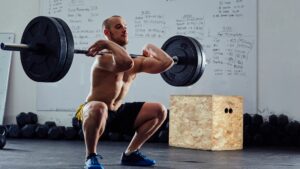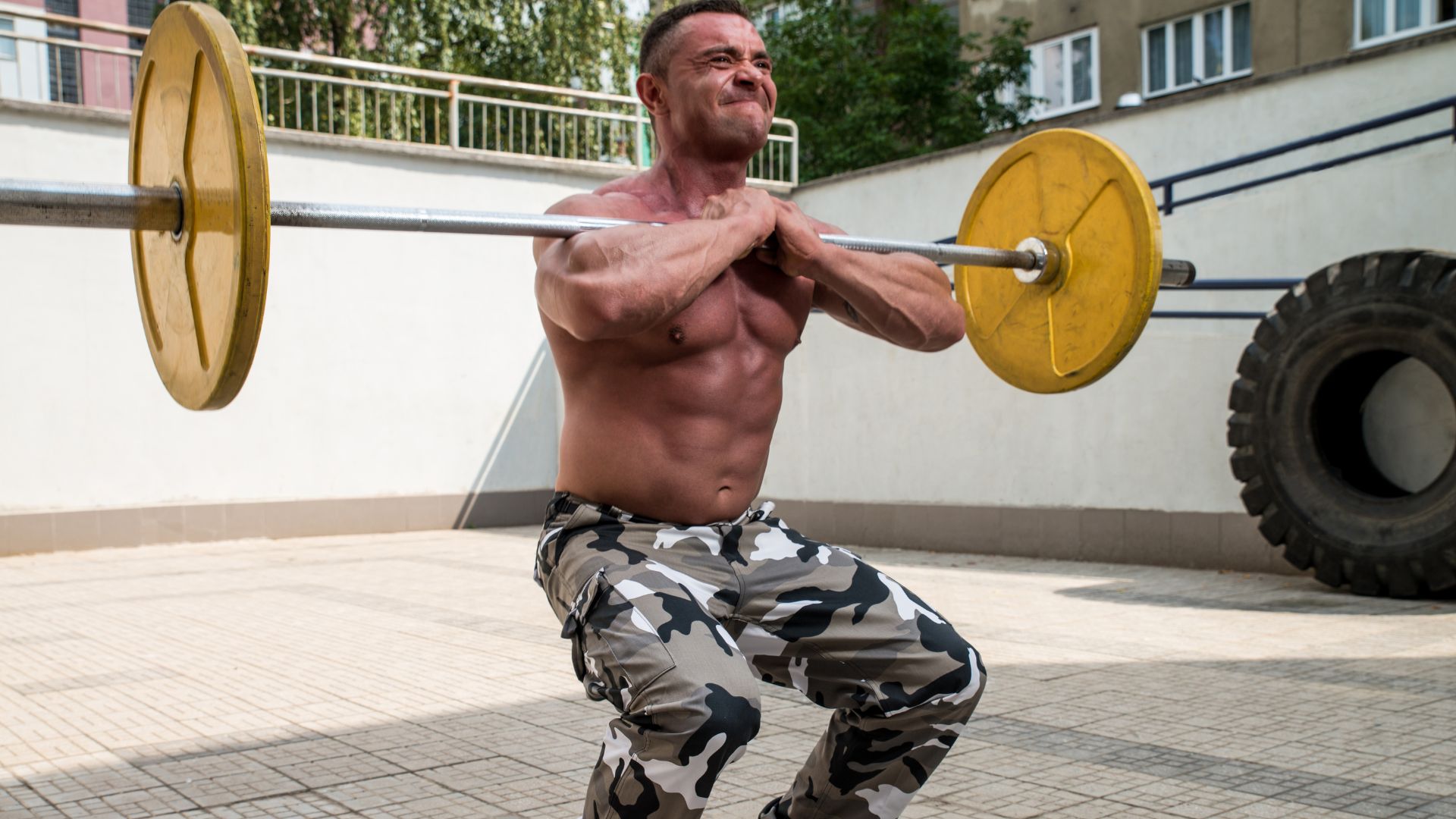Are barbell front squats a push or a pull exercise? It’s a common question that many fitness enthusiasts grapple with.
In this blog post, we’re going to dive into the nitty-gritty of barbell front squats to settle this debate.
Whether you’re a seasoned lifter or just starting your fitness journey, understanding the mechanics behind front squats can help you optimize your workouts and achieve your goals.
So, let’s unravel the mystery and find out if barbell front squats are all about pushing, pulling, or a bit of both!
Deciphering Barbell Front Squats: Are They a Push or a Pull Exercise?
Barbell front squats primarily engage muscles in both the push and pull categories, but they are predominantly considered a pushing exercise.
Push:
Quadriceps: Front squats heavily target the quadriceps, which are the muscles on the front of your thighs. They play a significant role in extending your knee joints, which is a pushing motion.
Pull:
Upper Back and Shoulders: While front squats are primarily a leg exercise, they also require you to hold the barbell in a front rack position, which engages your upper back and shoulder muscles to some extent.
This can be considered a pulling motion because you’re pulling the barbell into the front rack position.
It’s important to note that the primary focus of front squats is on the pushing motion because they primarily target the quadriceps and involve knee extension.
However, they do incorporate some pulling muscles in the upper body due to the need to maintain proper form and hold the barbell securely.
Further Explanations.
Let’s dive deeper and elaborate further on all the points mentioned.
Push:
let’s delve deeper into how the quadriceps are involved in front squats as a pushing motion:
Muscle Contraction:
During a front squat, your quadriceps undergo concentric muscle contractions. This means they contract to actively extend your knee joints.
As you descend into the squat, the quadriceps work to straighten your knees, allowing you to lift the weight back up as you ascend. This is a classic example of a pushing motion as the muscles are working to extend a joint.
Primary Knee Extensors:
The quadriceps are the primary knee extensors in the body. When you bend your knees to lower your body during a front squat, the quadriceps are responsible for reversing this motion by straightening the knees and pushing the weight upwards.
This motion is akin to pushing a heavy object away from you with your legs.
Front Squat Mechanics:
In a front squat, the barbell is held across the front of your shoulders, and you maintain an upright torso position.
This position places a significant load on the quadriceps as you need to lift the weight from a flexed knee position (the squat) to a fully extended position. This requires a forceful push from the quadriceps.
Force Generation:
To lift a heavy load in a front squat, your quadriceps must generate a considerable amount of force to overcome gravity and the resistance provided by the barbell.
This force production is a hallmark of a pushing motion.
In essence, the quadriceps’ primary role in front squats is to contract concentrically to extend your knee joints, which is a pushing motion.
They are essential for generating the force required to lift the weight during the upward phase of the squat, making front squats a quintessential pushing exercise for the quadriceps.

Pull:
The engagement of the upper back and shoulder muscles in front squats is more accurately described as an isometric contraction to maintain proper form and stability.
Here’s a deeper explanation:
Isometric Contraction: When you hold the barbell in the front rack position during a front squat, your upper back and shoulder muscles are engaged isometrically.
Isometric contractions involve muscle tension without significant changes in muscle length or joint movement.
In this case, the upper back and shoulders are working to stabilize the barbell in its position across the front of your shoulders.
Stabilization:
The upper back and shoulder muscles are primarily responsible for stabilizing the barbell and preventing it from rolling forward or falling.
They create a stable platform for the bar to rest on while your lower body performs the squatting motion.
No Active Pulling Motion:
Unlike exercises such as rows or pull-ups, where the primary action is to actively pull a weight or your body towards a target, the upper back and shoulder engagement in front squats doesn’t involve a pulling motion. Instead, it’s about maintaining posture and preventing the barbell from slipping.
In summary, while the upper back and shoulder muscles are certainly engaged during front squats, it’s more accurate to describe their role as isometric stabilization rather than a pulling motion.
The primary focus of front squats remains on the pushing motion, primarily involving the quadriceps and the extension of the knee joints.
A Complete tabular on this topic here
Here’s a complete tabular breakdown of whether barbell front squats are primarily a push or pull exercise, including key muscle groups involved:
| Aspect | Push or Pull? | Explanation |
|---|---|---|
| Primary Muscle Target | Push | Front squats primarily target the quadriceps, which extend the knee joints (pushing motion). |
| Quadriceps | Push | Quadriceps play a significant role in knee extension during front squats. |
| Upper Back and Shoulders | Stabilization (Isometric) | The upper back and shoulders are engaged isometrically to stabilize the barbell. |
| Front Rack Position | Stabilization (Isometric) | The upper back and shoulders help maintain the front rack position, preventing barbell movement. |
| Lower Back | Stabilization (Isometric) | The lower back contributes to maintaining an upright posture but is not actively pulling. |
In summary, barbell front squats are primarily a pushing exercise because they heavily target the quadriceps, which play a key role in knee extension, a pushing motion. While the upper back, shoulders, and lower back are engaged for stabilization, they do not involve an active pulling motion, making the primary motion a push.
My conclusion.
Barbell front squats are primarily a pushing exercise, targeting the quadriceps and involving knee extension, which is a pushing motion.
While there is some engagement of the upper back, shoulders, and lower back for stabilization, they do not involve an active pulling motion.

Hey there, it’s Mike Rrsq, the Editor-in-Chief over at Jsquat.com, and I’m absolutely obsessed with all things squat fitness! I’ve been lucky enough to get some serious recognition for my work in this field. With a solid background in the fitness and wellness industry, I’ve been there right from the get-go, helping shape this website into what it is today.
You see, I’m not just the boss around here; I’m also a passionate contributor. I love sharing my insights through my articles, and trust me, they’re not your run-of-the-mill stuff. Each piece I write is a labor of love, filled with my expertise and real-world experience in the fitness universe. So, if you’re into fitness and looking for some inspiration, you’re in the right place!

